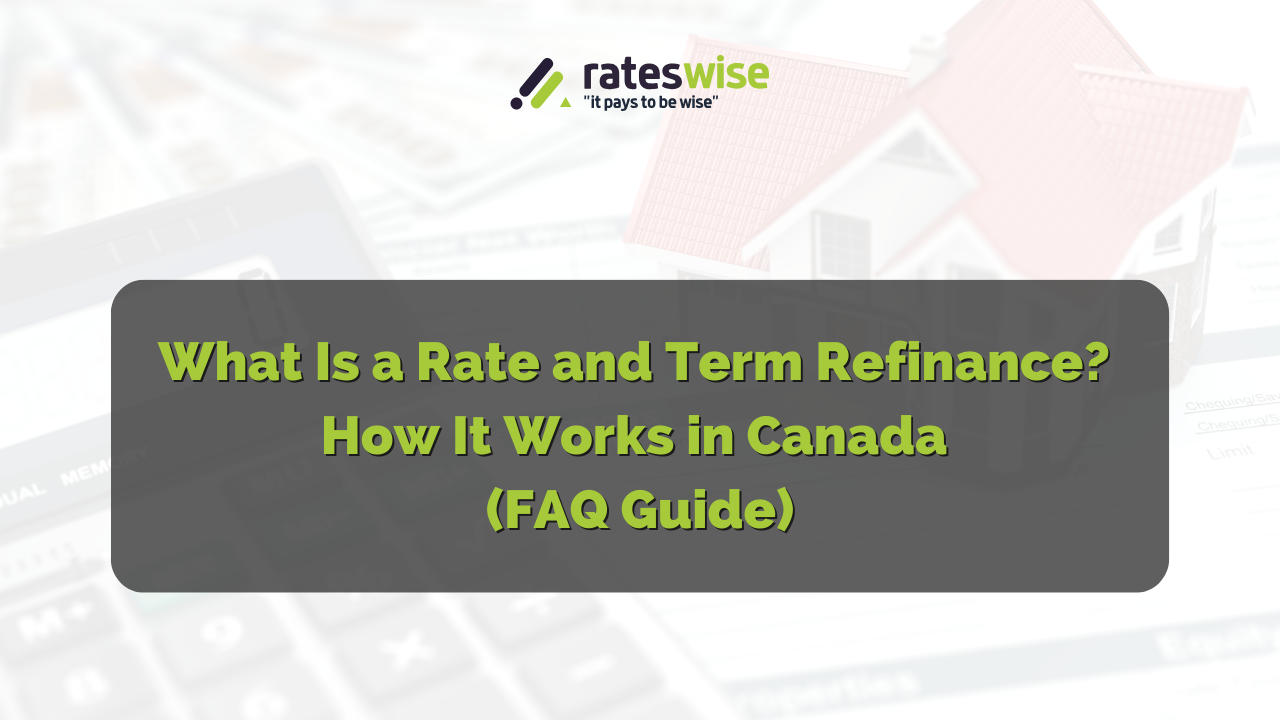What Is a Rate and Term Refinance? How It Works in Canada (FAQ Guide)

Updated: September 2025
Q: What is a rate and term refinance?
With a rate and term refinance, you replace your current mortgage with a new one that has a lower interest rate or a shorter term; no need to get extra funds. Another name for it is a "no cash-out refinance." It's intended to help you pay off your mortgage more quickly or reduce your monthly payments.
Q: What distinguishes a cash-out refinance from a rate and term refinance?
- Your new mortgage has the same rate and term as your previous one, or less; no extra funding has been issued.
- You borrow more money than your mortgage balance and get the difference in cash when you cash out.
Q: What is the purpose of a rate and term refinance?
- To secure a lower interest rate if market rates decline
- To reduce the term of the mortgage (for instance, from 30 to 25 years).
- To gradually lower the total amount of interest paid
- To switch from variable to fixed with lower risk or to obtain better terms
Q: Is it possible for me to refinance in Ontario or Canada with a rate and term?
Yes, a lot of lenders in Canada provide this. You'll need sufficient equity in your house, proof of income, and good credit. Compared to cash-out options, the qualification process is usually simpler because no extra funds are requested.
Q: Are there costs or risks?
Indeed:
- Penalties for early repayment if your current mortgage term is broken
- Costs of legal and appraisal services
- You will only receive a restructured loan; you won't receive any cash.
People Also Ask
Is a rate and term refinance worth it?
Maybe — it depends on the numbers.
Why it can be worth it:
- Your monthly interest payment is reduced to a lower rate.
- A shorter term reduces total interest and allows you to pay off debt sooner.
Why it might not be:
- Fees associated with refinancing include appraisal, legal, administrative, and potential prepayment penalties.
- If extending the term is all you do to reduce payments, you can end up paying more interest altogether.
Quick way to check:
- Add up all your refinance fees.
- The amount you will save each month is divided by that total.
- It's probably worth it if the outcome (months) is shorter than the amount of time you intend to spend in the house.
Example: break-even ≈ 16 months, fees = $2,400, monthly savings = $150. It's likely to pay off if you stay for two or more years.
Does a rate and term refinance affect my credit score?
Yes, but only for a brief period of time.
What happens:
- When you apply, lenders run a hard credit check. That may momentarily lower your score by a few points.
- Your credit mix and account history may vary when you open a new mortgage, which could somewhat affect your score.
- Over time, your score will improve if you make the new loan installments on time.
Tips to limit the impact:
- Shop for rates within a short period of time. Multiple checks can be counted as one for scoring.
- Do not open extra financial accounts at the same time.
- Continue making on-time bill payments to quickly recover from any slight drop.
About the Author
Written by a Rateswise mortgage expert
Instead of only promoting cash-outs, we have assisted Canadian homeowners (particularly in Ontario) in making smart refinance decisions by demonstrating when rate and term make sense.